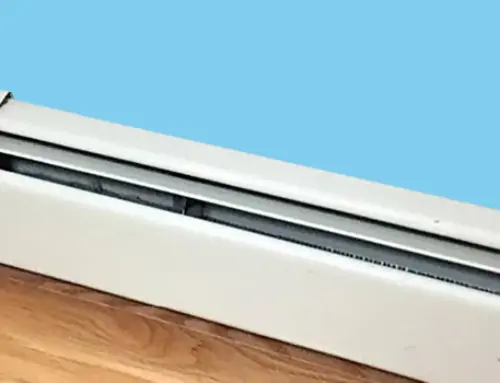How to Transfer Utilities When You Move (and Save Money in PA, IL, OH & MI)
by Jenna Mendez
18.2 min read

Moving into a new home is exciting, but it can quickly turn stressful if you forget to set up your utilities. The last thing you want is to walk into your new place only to find there’s no electricity, no hot water, or a surprise final bill from your old address.
Transferring utilities may seem like a minor task but doing it right can help you avoid service interruptions, extra fees, and unnecessary stress. Over our 35 years in business as a gas and electricity supplier, we’ve helped multiple customers navigate the journey transferring utilities to their new home. And we’re here to help you too.
We’ll walk you through the steps to transfer utilities smoothly, offer practical ways to save money, and highlight key details specific to Pennsylvania, Illinois, Ohio, and Michigan, especially if you live in a deregulated energy market where you can choose your supplier.
Let’s get you set up!
Key Points of This Article:
- Transferring utilities is essential to avoid service interruptions, unexpected bills, and stress during a move. Many people overlook this step, but it’s one of the most important parts of preparing for a new home.
- Homebuyers should begin transferring utilities 2 to 4 weeks before their closing date to ensure services like electricity, gas, and internet are active on move-in day.
- You’ll need to transfer or set up several essential utilities when moving, including electricity, natural gas, water, sewer, trash, internet, cable/streaming, and home security systems.
- The type of energy market in your new location (regulated vs. deregulated) affects how you transfer electricity and gas.
When to Transfer Utilities When Buying a House
Wondering when to transfer utilities when buying a house? We recommend you start transferring utilities 2 to 4 weeks before your closing date.
This ensures that your services are active on your move-in day and prevents gaps in electricity, gas, water, or internet access. Some providers even allow you to schedule a transfer date in advance, so don’t wait until after you’ve moved.
One quick note we’ve found helpful for our customers to know is that utilities should be transferred to your name on or just after the closing date. This is because the seller is responsible for keeping your utilities active until then.
Be sure to contact each utility provider with your new address, closing date, and account details to ensure everything transfers in time
Quick Tip: If you’re moving to a new home where your utility changes, ask your real estate agent or seller for a list of utility providers and suppliers in your area so you can set up service ahead of time, compare rates, and avoid any interruptions when you move in.
Types of Utilities to Transfer When Moving
When you own a home, or are moving to a new one, it’s easy to overlook or forget a utility or two. We want to help you avoid that by providing a whole list of the utilities you must transfer when moving.
Here’s a quick guide to what you’ll need to transfer to avoid service disruptions:
- Electricity – Powers lights, appliances, and HVAC; transfer early to ensure it’s on by move-in day.
- Natural Gas – Heats your home, stove, or water; requires scheduling if a technician visit is needed.
- Water – Essential for drinking, bathing, and cleaning; usually managed by your city or municipality.
- Sewer – Often bundled with water; confirm with your local utility or town office.
- Trash – May be handled by the city or require a private provider; check with your landlord or local services.
- Internet – Set up ahead of time, especially if you work from home or stream.
- Cable or Streaming – Coordinate timing with internet setup or change your account address online.
- Home Security (Wi-Fi connected) – Transfer to ensure continued monitoring and smart home control.
It’s helpful to keep in mind that if you’re renting, some utilities (like water, trash, or even internet) might be included in your lease and you won’t have to transfer them from your old apartment. Always check with your landlord or property manager to confirm what you’re responsible for.
If you’re moving from an apartment to a house, be prepared to manage more utilities on your own. But don’t worry, keep reading, we will cover this too later on!
Why Your Energy Market Matters When Transferring Utilities
Before we walk through the utility transfer process for each state, it’s important to understand the difference between regulated and deregulated energy markets because it directly impacts how you transfer utilities for electricity and gas and what choices you have whether you’re moving within or out of your current state.
Bottom line, when you work on transferring utilities, no matter which type of energy market you’re moving into, especially if you’re switching towns or states, you’ll likely need to set up electricity and gas with a whole new utility before moving into your new home.
In regulated electricity and gas markets (like in Florida, California and others), your local utility handles both delivery and supply, and you typically can’t choose your energy supplier which can potentially lead to a better rate or more plan options.
But in deregulated states like Pennsylvania, Illinois, Ohio, and parts of Michigan, you can choose who supplies your energy, even though your local utility still handles delivery. This gives you the option to explore a retail energy supplier.
Working with a supplier means:
- You can lock in a potentially lower rate
- Explore renewable energy options
- Get more flexible with contract terms
- Avoid surprise price spikes depending on which plan you choose
- Choose a plan that fits your household’s needs and lifestyle
So, when you’re moving within or into a deregulated energy market, transferring your utilities isn’t just a checklist item; it’s a chance to potentially save money, gain control, and choose energy that matches your values. Let’s walk you through what to do next:

How to Transfer Utilities When Moving to PA, IL, OH and MI
Coming to the Midwest? Here’s how to transfer your utilities:
1. Start Early and Get Organized
Getting a head start on your utility transfers can make your move much smoother. Collect recent utility bills as they usually have the account numbers and other info you’ll need to switch or set up service.
Create a checklist of all the utilities you’ll need to cancel, transfer, or start at your new address.
2. Look Into New Utility Providers at Your New Home
When it comes to transferring your natural gas and electricity services, depending on where you’re moving, you might be able to keep your current providers, or you may need to find new ones. The same goes for your energy supplier if you’re moving into or within a deregulated energy market.
We recommend starting the utility transfer process first with your gas and electricity providers because if you’re moving out of your current provider’s service area, you’ll likely need to find a new utility for your electricity and gas needs, and possibly a new supplier.
That process can take time, so it’s best to start early (about two months before your move) to avoid delays or ending up with a plan that doesn’t fit your needs.
To start this process, ask friends for recommendations, read online reviews, and check what’s available in your new zip code. Once you’ve found a provider and supplier that fits your needs, you can start the transfer process!
If you’re renting, some utilities might be handled by your landlord, and you might not be able to switch. Always check your lease to know what your responsibility is.
3. Contact Utility Companies Ahead of Time
For all your utilities, call your utility providers at least a month before your move.
Some services, like gas or internet, or even trash collection in certain areas may require a technician visit, new equipment, or special setup. Scheduling early gives you time to plan around that.
To avoid service gaps, schedule utilities to turn off the day after you move out and turn on the day before you move in.
4. Update Your Address with Utility Companies
As you contact your utility providers, be sure to let both your current and future providers know your new address. This helps ensure you don’t miss any final bills or important account updates.
And pro tip from professionals: don’t forget to update your address with the U.S. Postal Service too! This helps with forwarding important mail, avoiding missed bills, and ensuring your new utility accounts are linked to the correct address from the start. We recommend updating your address about two weeks before your move.
If your utilities are staying in someone else’s name (like a roommate), make sure your name is removed so you’re not responsible for charges after you move.
5. Schedule a Final Meter Reading
Even if it’s not required, try to schedule a final meter reading for gas, electric, or water. Having a record of your usage when you move out can help if there’s ever a billing issue later. If a technician can’t come out, take a photo of your meter as proof.
6. Check on Outstanding Balances or Refunds
It’s easy to forget about past bills in the middle of a move. Even after shut-off, call your old providers to confirm your final balance, ensure the account is closed, and check for any refunds or deposit returns.
This can help you avoid late fees or hits to your credit. You might even get a refund if you paid a deposit or overpaid your final bill.
7. Double-Check Your Start and Stop Dates
Before moving in, confirm with your new utility providers that everything is set up and ready to go. You should do this one last time a week before your move.
The last thing you want after a long day of moving is to realize your power or hot water isn’t on. Also, call your old providers one last time to confirm your shut-off date and make sure your account is squared away.
Other Important Tasks to Complete Before Moving
- Set up USPS mail forwarding
- Update billing addresses on bank/credit cards
- Schedule movers or rental trucks early
- Label boxes by room and fragility
- Check for city-specific parking permits for moving trucks
How to Transfer Utilities When Renting
Supplying numerous apartments with energy over the years, we know how you should transfer utilities when renting.
Renters in deregulated energy markets may have the option to choose their energy supplier, but only if they pay the utility bills directly and their lease allows it.
Always check your state regulations, lease terms, and whether your landlord manages the utilities. If permitted, you can shop for a plan that better fits your budget and lifestyle. and you can easily transfer utilities on your own in just a few steps. And the best part? You can transfer utilities on your own in just a few steps:
1. Check Your Lease
Number one rule when renting and attempting to transfer utilities, check your lease agreement! It should clearly outline which utilities you’re responsible for and which are covered by your landlord or property manager.
In many apartment rentals, landlords include services like water, trash, or even internet in the rent. But electricity and gas are often the tenant’s responsibility.
What Happens if I Move Apartments? Do I need to Transfer Utilities?
If you’re moving from one apartment to another, you likely won’t be “transferring” utilities in the traditional sense. In most cases, you’ll be starting new utility accounts in your name at your new address.
That said, if you’re moving within:
- the same building or complex,
- the same city,
- Or the same energy market and your utility provider allows it; you may be able to transfer your account to your new address without closing your account with your current utility provider entirely.
Bottom line, even if you don’t need to transfer an existing account, you’ll need to cancel service at your old address, set up new services at your new one, and confirm which utilities you’re responsible for.
What if I’m Moving From Renting to a New Home? Do I Need to Transfer Utilities?
You’ll most likely need to transfer or set up new utility services when moving from a rental to a new home. That’s because homeowners are typically fully responsible for setting up all utility accounts in their name, unlike in many rentals, where some services may be included in the lease.
If your previous landlord handled utilities like water, gas, or trash, you likely never had those accounts in your name.
When you move into your new home, you’ll need to create new accounts with each individual utility provider to start service. If you’re living in the same town or state, if you have a positive experience with your utility, you might be able to stay with the same provider when you move.
If you’re moving out of town or across state lines, you’ll need to do a lot of legwork. Utility companies and energy suppliers vary by location, so you’ll need to do some research to see which providers service your new area and sign up for a new service plan.
2. Gather Account Info
Once you’ve checked your lease and identified what utilities you’re responsible for, collect your current account numbers, billing info, your new address, and move-in date. All this information is essential to have on hand when notifying your utilities providers of your move.
3. Notify Providers Early
About a month before your move, contact your new and current utility companies to transfer or cancel service. This is especially important for renters who are transitioning into a new home. You want to make sure all your lights and water are on when you step into your home.
4. Schedule Activations and Install
Depending on the utilities like gas or internet might require more setup in your new home. So, make sure essential services are set to start by move-in day and book any installation appointments in advance to avoid gaps in service.
5. Update Your Billing Address
About two weeks before your move, whether you’re simply moving apartments or moving into a new home, don’t forget to update your billing address with your new address. Change your address with each provider and set up auto-pay to avoid missed bills.
6. Close Out Old Accounts
If you’ve chosen a different utility company when you make your move, be sure to pay any remaining balances and confirm service disconnection at your previous address.
Can I transfer utilities to my roommate’s name?
You can transfer utilities to your roommate’s name, but in most cases, the request must come from them.
Most utility companies require the new account holder to call or apply online directly, provide ID, and possibly go through a credit check or pay a deposit.
You may also need to formally close your account to avoid future charges. Always confirm the service transfer is complete before moving out or changing billing responsibility.
How Much Does It Cost to Transfer Utilities?
In most cases, transferring utilities is free, especially if you’re staying with the same provider and service area. However, fees may apply if you’re switching energy suppliers in the middle of your contract, setting up service at a new address (particularly in a newly built home), or missing deadlines.
These costs can range from $10 to over $200 for connection, activation, or reconnection services.
To avoid extra charges, ask your provider about any potential fees in advance, schedule your service changes early, and be prepared for a deposit if you have limited credit; many providers will waive it if you enroll in auto-pay or have a strong payment history.
How Long Does It Take to Transfer Utilities?
The timing depends on the type of service, but in general, we recommend starting the transferring process 2 to 4 weeks before your move to avoid any delays. Some services can be switched quickly, while others need more time, especially if an installation is involved.
Transfer Time of Different Utilities
- Electricity and Gas: In our experience, we’ve seen most providers take a day or two to transfer services once you give notice. But they still prefer at least a week’s heads-up. Delays can happen during busy seasons, so we advise not to cut it close.
- Water and Sewer: These are typically handled within a few days. Just be sure to give your provider enough notice to set the switch.
- Internet and Cable: These can take the longest, especially if your new place needs new wiring or equipment. It’s best to contact your provider at least two weeks ahead of time.
To keep things running smoothly, reach out to all utility companies as soon as you know your move-in date. The earlier you plan and notify, the less likely you’ll run into last-minute issues.
Can You Transfer Utilities with a Balance?
You usually can transfer utilities with a balance, but the unpaid amount follows you to the new address.
Most utility companies allow the transfer but require that the balance be paid in full by the due date to avoid late fees or service disconnection. If the balance is large or severely overdue, some providers may block the transfer until payment is made or a payment arrangement is set up.
Ways to Save Money on Utilities
- Use ENERGY STAR‑certified appliances and lighting: Swap out old incandescent bulbs for ENERGY STAR LED bulbs—to save up to 90% in lighting energy—and opt for high‑efficiency appliances that reduce usage across the home.
- Reduce standby power: Unplug devices or use smart power strips to eliminate “vampire energy” from idle electronics, which can account for 5–10% of your household energy consumption.
- Install a smart or programmable thermostat: Automating temperature control—like adjusting the settings when you’re away using Wi-Fi connectivity—can reduce HVAC energy use by around 8% on heating and cooling costs, saving you approximately $50 per year.
- Seal leaks and insulate: Properly weather-strip windows and doors, add insulation around your home, and maintain HVAC filters to reduce heating and cooling costs.
- Everything on cold: Wash clothes in cold water and shorten shower times—small changes like these reduce both water heating and electricity consumption.
- Use natural light: Open curtains during the day for free lighting and close them in warmer months (or at night in winter) to help manage indoor temperatures naturally.
- Scheduling and appliance habits: Run high-energy appliances (like dishwashers or dryers) during off-peak hours if your utility offers time-of-use pricing. Group similar cycles to save energy.
FAQs
Will I have to pay a new deposit or connection fee?
When transferring utilities to a new home, you might not have to pay a new deposit or connection fee if you’re transferring your existing service to the new location.
However, if you’re setting up new service, or if you have a poor payment history, you may be required to pay a deposit. It’s best to contact your specific utility providers to understand their policies and whether any fees apply to your situation.
Can the title company transfer utilities when selling a house?
No, the title company cannot transfer utilities for either the seller or buyer. That responsibility always falls on the homeowner or buyer, not the title or escrow provider. Utility companies require direct authorization from the account holder.
Can I have two utility connections?
Absolutely! You can have two separate utility accounts in your name at two different addresses, even during a move.
If you need power in both your old and new homes for a brief overlap, most utility companies allow that by keeping both services active for a short period. Just contact both providers to schedule each service (start and stop dates), and you’ll receive two separate bills for each location.
This is especially common when you’re selling one home while settling into another or managing move-in flexibility.
I forgot to transfer my utilities. What should I do?
Don’t panic! Contact your utility providers immediately to request a rush setup or transfer.
Many companies offer same-day or next-day service, especially for electricity, gas, and water. Be ready to provide your new address, move-in date, and ID.
Keep in mind, expedited service may come with an extra fee, and you may be without power or water for a short time until it’s activated. To avoid this in the future, try to schedule utility transfers 5-7 days before moving.
What should I do if there is a discrepancy in the final bill?
If you notice a discrepancy in your final utility bill, contact the utility provider immediately. Ask for a breakdown of the charges and verify details like meter readings, service dates, and any deposits or fees.
It helps to provide photos of your final meter reading, your move-out date, and any written confirmations. Most billing errors can be resolved within one billing cycle, but follow up in writing and keep records of all communication until it’s fixed.
Transferring utilities may not be the most exciting part of moving—but it’s one of the most important. A smooth utility transfer ensures your new home is ready for day one, without unexpected surprises like power outages, extra fees, or last-minute stress.
And if you’re moving to Pennsylvania, Illinois, Ohio, or Michigan, you’re in a deregulated energy market looking for a new energy supplier, check us out!
We offer innovative energy plans designed to meet your unique household needs—whether you’re focused on stability, predictability, or sustainability. Compare plans now and find one that moves with you.
Jenna Mendez is a Midwest native with lifelong roots in Illinois and time spent in Ohio during college, giving her a deep understanding of the Midwest region’s people, climate, and energy needs. She brings firsthand experience and local insight to topics that matter to Midwest homeowners, especially energy efficiency, sustainability, and home living. Jenna specializes in writing about eco-friendly living, all things Midwest, renewable energy, and practical ways to reduce energy costs. Jenna brings a trusted, and local hometown voice to every article she writes, helping readers live well, and sustainably, right where they are.







